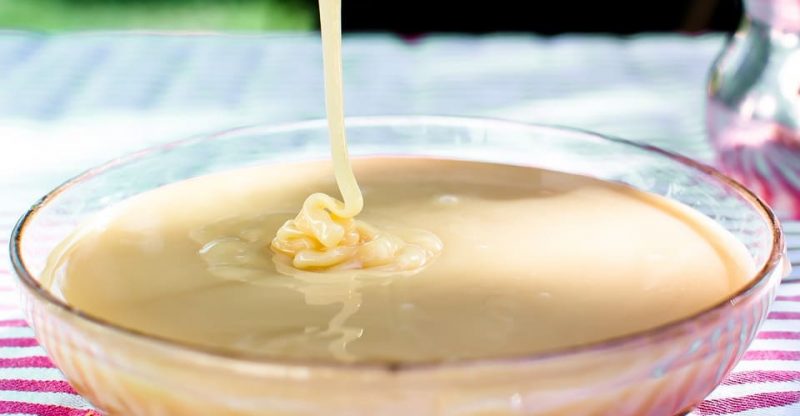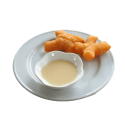What Is Disodium Phosphate E339(ii) In Food: Uses, Safety, Side Effects

What is it | Production | Uses | Safety | Side Effects | FAQs
Disodium phosphate (DSP) or sodium phosphate dibasic, or disodium hydrogen phosphate, is a multifunctional ingredient that can be used as an acid regulator, anticaking agent and nutrient supplement in food. The European food additive number for it is E339(ii).
DSP can be employed as a salt to assist caramelization for the production of class I caramel color ( E150a). Also, it may be added for quick cooking in enriched farina and macaroni products; it can also be used to modify condensed skim milk with calcium hydroxide in ice cream; and in cheese and bakery as an emulsifier. (1)
What is disodium phosphate?
It is an inorganic compound derived from naturally occurring minerals and existing in two types: anhydrous with the chemical formula Na2HPO4 and hydrate with three forms: dihydrate, heptahydrate and dodecahydrate.
How is it made?
It is commercially produced by the reaction of phosphoric acid with sodium carbonate or sodium hydroxide. A specific hydrate can be obtained by evaporating the resulting solution within its stable temperature range, e.g. dodecahydrate (below 35℃), heptahydrate (35.4-48℃), dihydrate (48.4-95℃) and anhydrous (above 95℃)
Properties
Appearance
- Anhydrous: a white, odourless powder.
- Dihydrate, heptahydrate and dodecahydrate: a white odourless powder or granular.
Solubility
Freely soluble in water, insoluble in ethanol.
Other Names
- Phosphoric acid, disodium salt
- Disodium hydrogen orthophosphate
- Secondary sodium phosphate
- Disodium orthophosphate
CAS Number
7558-79-4
Chemical formula
- Anhydrous: Na2HPO4
- Hydrate: Na2HPO4 · nH2O (n = 2, 7 or 12)
Molecular Weight
141.98 (anhydrous)
What are the uses?
Sodium dihydrogen phosphate is categorized in sodium orthophosphate that is widely used in food, cosmetics, pharmaceutical, aquaculture (feed grade), printing and dyeing, water treatment, and other fields.
Food
Generally, sodium phosphate dibasic is a multifunctional ingredient that can be used to improve nutritional value and cooking performance in food production.
It could be an acid regulator due to its weak alkaline (ph value 8.4 to 9.6 with 1% solution); used as an anticaking agent and moisture retention agent for its hygroscopic; as a quality improver for condensed milk; as a stabilizer for dairy products, meat and fish products; a component in mixed salt for curing, and etc.
It can also be used to produce food grade sodium trimetaphosphate, sodium pyrophosphate, sodium hexametaphosphate and sodium polyphosphate.
Is disodium phosphate safe to eat?
Yes, the safety used as a food additive has been approved by the U.S. Food and Drug Administration (FDA), European Food Safety Authority (EFSA), Joint FAO/WHO Expert Committee on Food Additives (JECFA), as well as other authorities.
FDA
DSP is generally recognized as safe (GRAS) when used in accordance with good manufacturing practice (2) AND can be used as an anticaking agent, flavoring agent, ph control agent, sequestrant, and nutrient in food. (3)
EFSA
Disodium phosphate E339(ii) is listed in Commission Regulation (EU) No 231/2012 as an authorised food additive and categorized as “additives other than colours and sweeteners” (4)
Safety re-evaluation in 2019
Phosphates are low acute oral toxicity, no genotoxicity, carcinogenicity, and no developmental toxicity. In 2019, EFSA derived a group acceptable daily intake (ADI) for phosphates expressed as phosphorus of 40 mg/kg body weight (bw) per day. (5)
Authorised uses and levels
Sodium phosphates have a wide use and some of the approved applications are listed together with phosphoric acid (E338), potassium phosphates (E340), calcium phosphates (E341), magnesium phosphates (E343), diphosphates (E450), triphosphates (E451), and polyphosphates (E 452).
The separate uses with the maximum levels ranging from 1000 to 12600 mg/kg and the following foods may contain with it (6):
- Natural casings for sausages
- Infant formulae
- Cereals
- Dietary foods for infants for special medical purposes
- In the preparations of the colour anthocyanins (as a carrier)
UK Food Standards Agency
Categorized in “Others” (7)
Food Standards Australia New Zealand
It is an approved ingredient in Australia and New Zealand with the code number 339. (8)
JECFA
Function Class: food additives, acidity regulator, emulsifier, texturizer, thickener. (9)
Tolerable Intake: MTDI 70 mg/kg bw (as P) set in 1982. (10)
What are the possible side effects?
It is common that sometimes consumers have health concerns whether disodium phosphate is bad for our health and what are the possible health risks. It is generally considered safe but too much phosphorus may be harmful to the health of the kidney and heart.
Is it safe for pregnant?
Yes, it is generally safe but better consult with your doctor in the condition of use.
Frequently asked questions
Is it natural?
No, it is derived from chemical synthesis.
Is it vegan?
Yes, it is vegan as the raw materials phosphoric acid is from phosphate rocks, sodium carbonate is from the synthesis of sodium chloride and limestone, and sodium hydroxide is obtained from chemical synthesis instead of animal sources. So it is vegan and suitable for the diet of vegetarians.
Is it Halal?
Yes, it is generally recognised as halal as it is permitted under the Islamic Law and fulfill the conditions of Halal. And we can find some manufacturers certificated with MUI halal.
Is it Kosher?
Yes, it is kosher pareve. E339(ii) has met all the “kashruth” requirements and can be certified as kosher.
Is it gluten free?
Yes, it is typically gluten-free and people with celiacs can eat it. It is an ingredient commonly found in both gluten-free and gluten-containing food labels. The manufacturing process complies with the FDA’s definition of gluten free, that it does not contain wheat, rye, barley, or crossbreeds of these grains.
Is disodium phosphate a leavening agent?
No, as it is a weak alkali, with PH value 8.4 to 9.6 of 1% solution, so different with monosodium phosphate, it cannot be used as a leaving acid as it cannot generate carbon dioxide when reacting with baking soda.
Conclusion
Now you may have a knowledge of the food additive – disodium phosphate E339(ii), from:
- Types: anhydrous, dihydrate, heptahydrate and dodecahydrate
- Production
- Uses
- Safety
- Side effects
- FAQs such as is it vegan, gluten free, synthetic or natural.
What kinds of food packaging have you found this ingredient in? Let me know in the comments.



It is part of the list of ingredients in one of Nestlé’s evaporated milks.
Hi Dani,
Thanks for your information.
So,Disodium Phosphate in Half and Half with my two small cups of morning coffee is very safe?
I do not like GRAS addetives!
It is also in Grown in Idaho brand frozen French Fries.
Found it in Lucerne brand light cream in combination with sodium citrate.
Found in Walmart’s Great Value half and half.
It is in Rainbow milk. E339.
It’s in baby porridge
Found it in Amul cheese